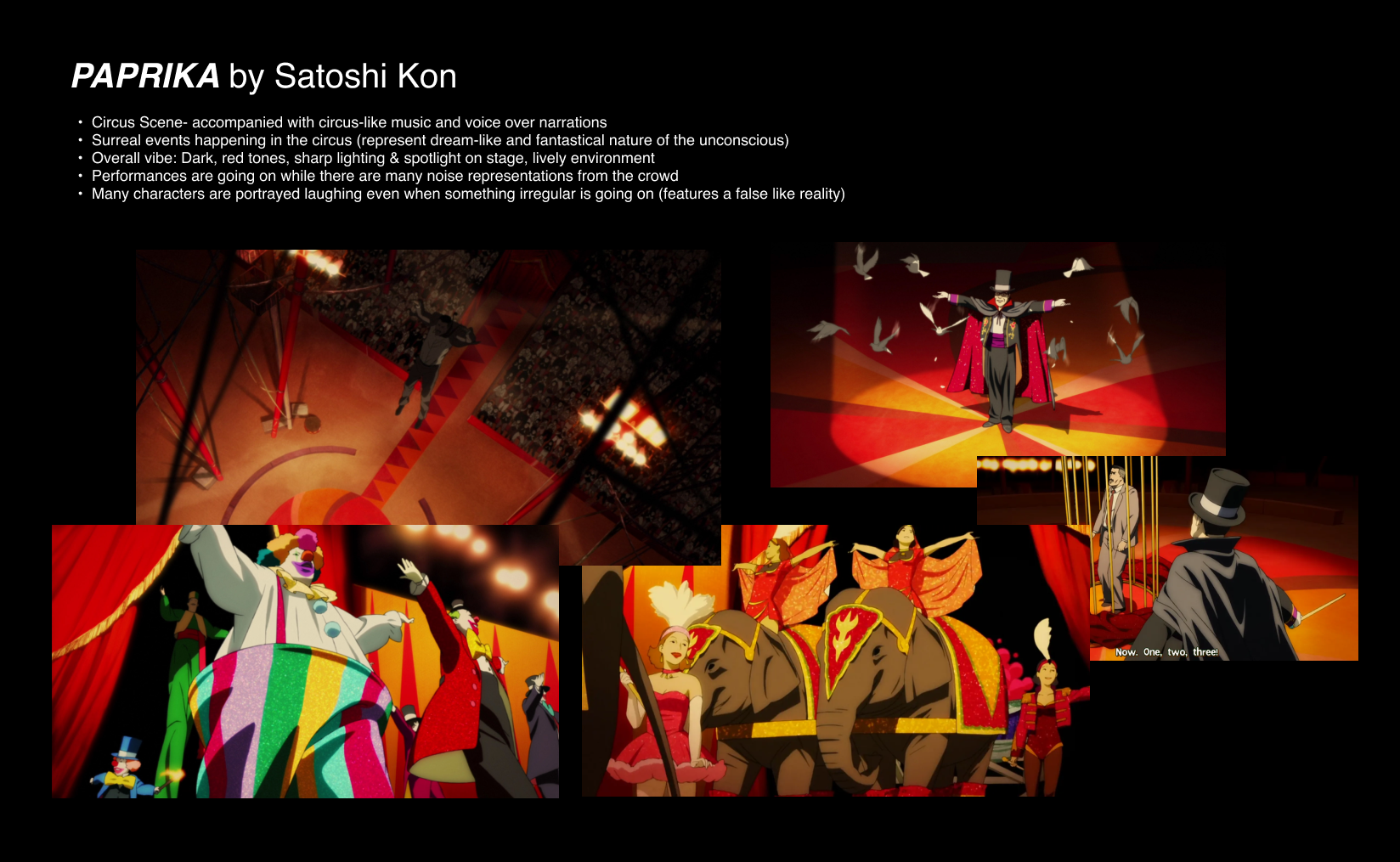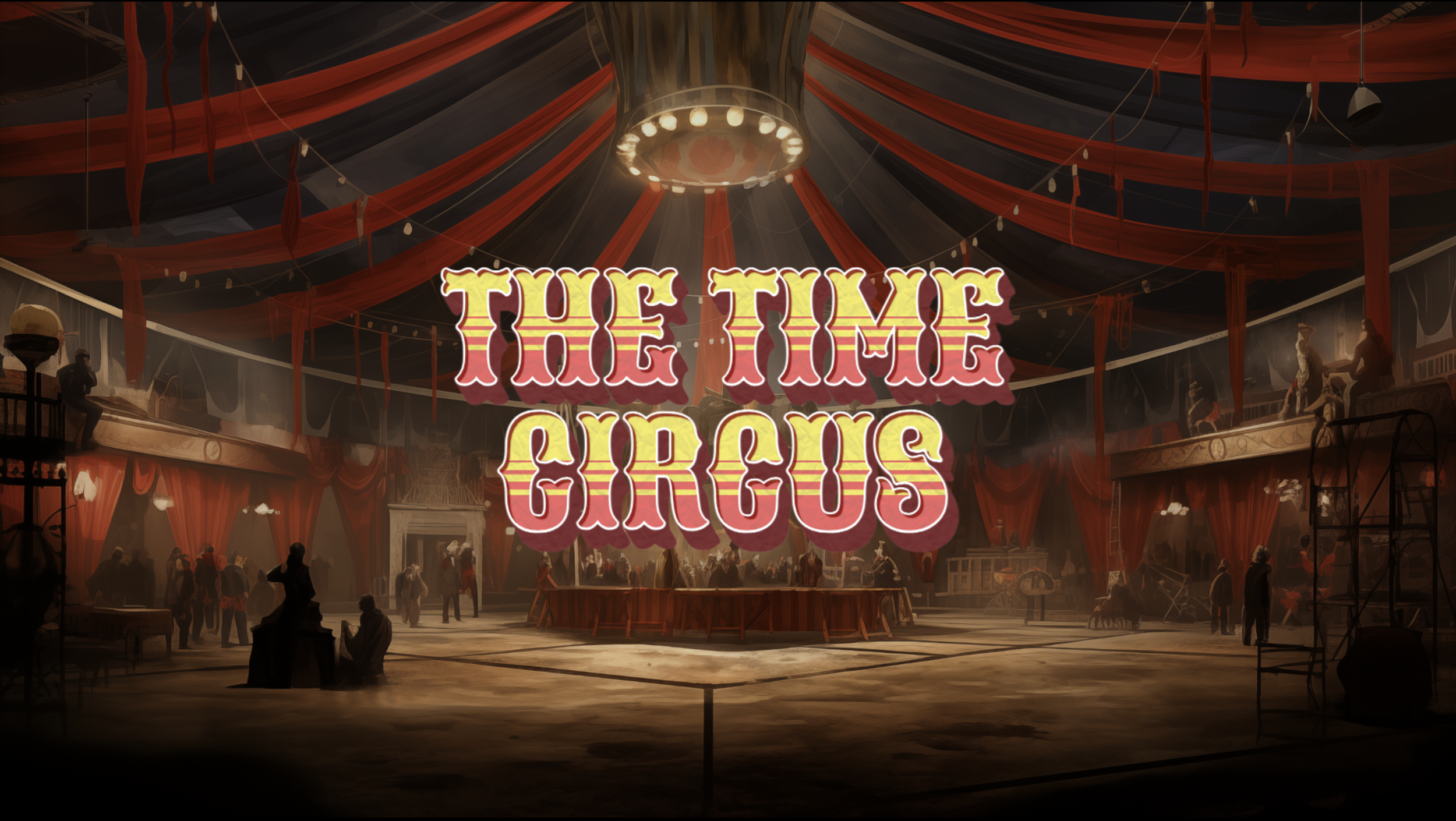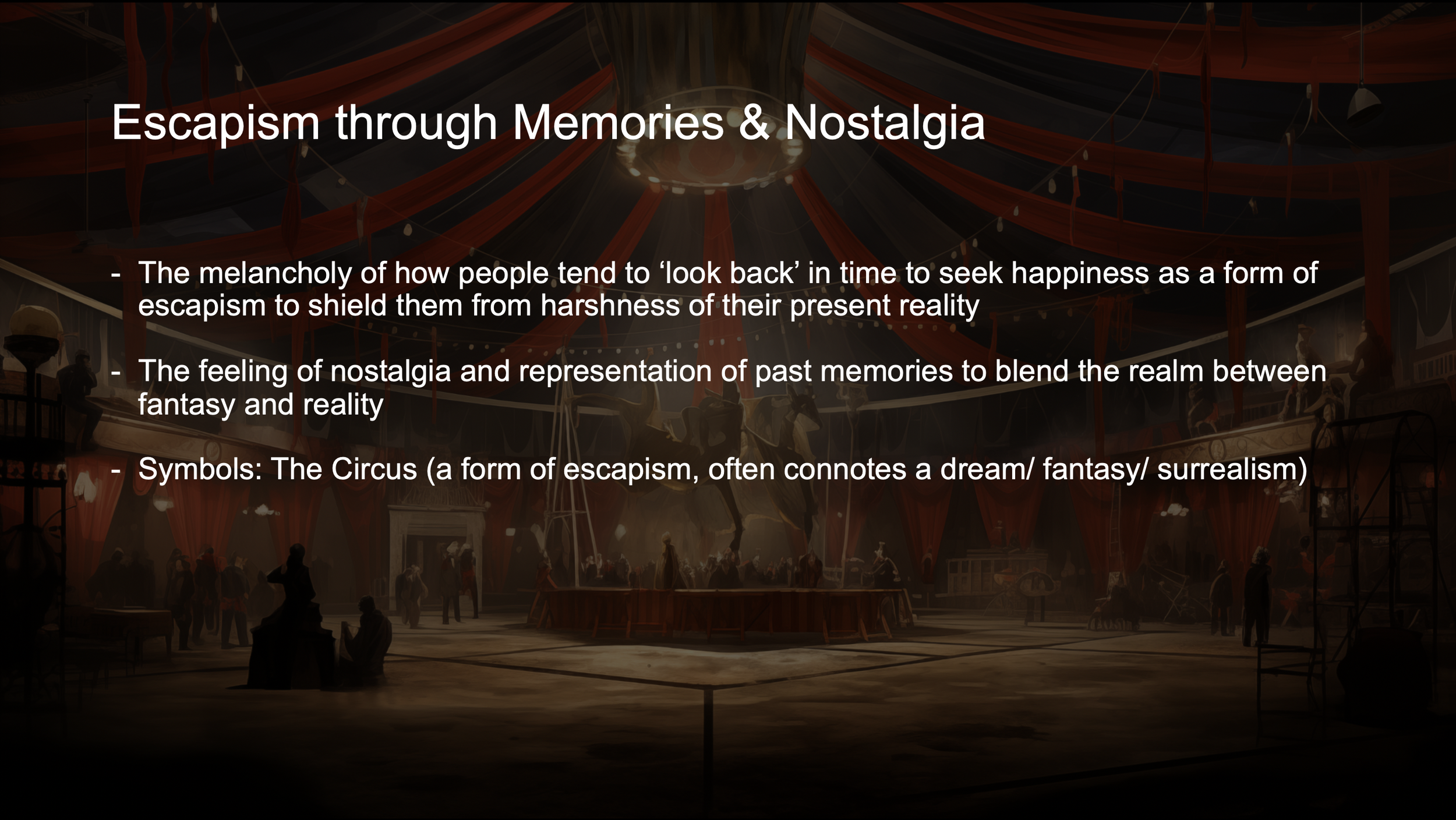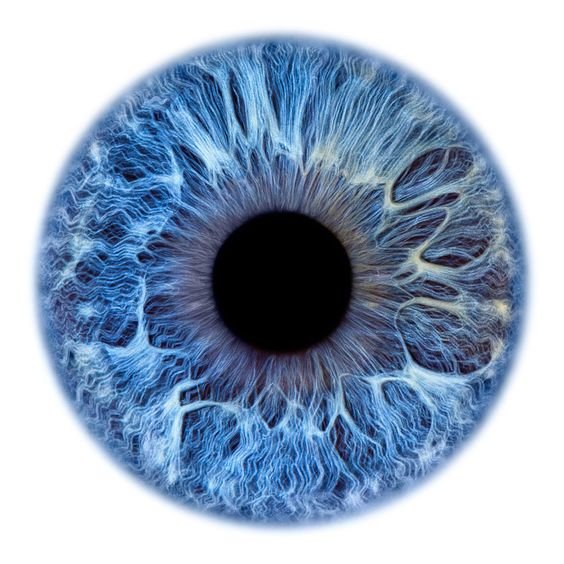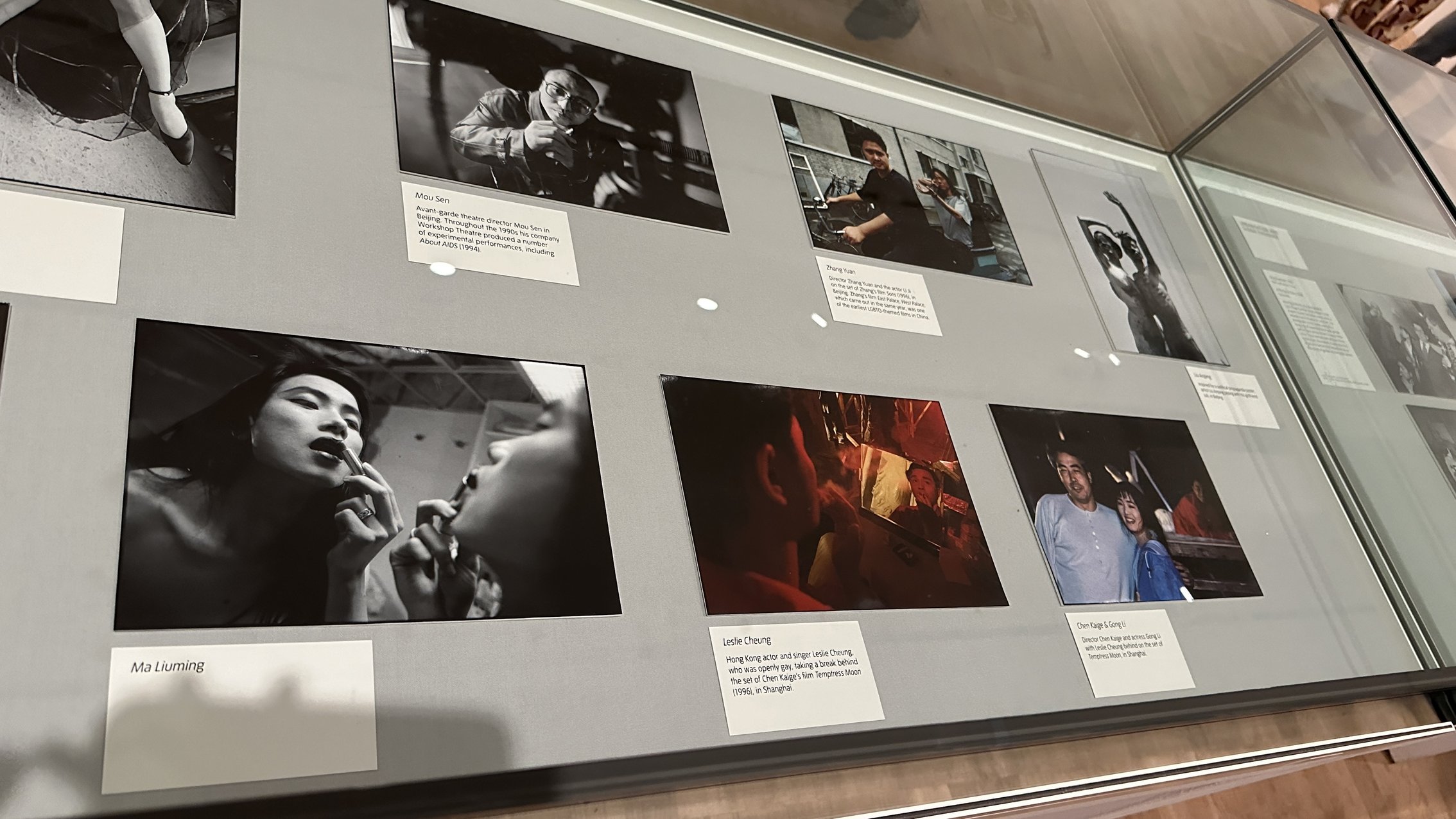

Brief B- The Library of Babel:
Complexed Narratives & Worlds
In this project, we decided to create a storyboard depicting a fictional story which examines the complexity of time and the emotions related to it. However, this idea did not come to mind immediately overnight. It took us a lot of time, effort, and research to land to this theme. Personally, I found this project quite challenging as I would not usually engage myself with such complexed and abstract topic of explorations. In Library of the Babel, the library is depicted as an infinite universe with limitless possibilities and spaces. As a group, we read through some of the stories presented in this library and exploited several main themes; namely on the exploration of knowledge, infinity, and the search for meaning. Without much clue to where this project could unfold, we decided to use elements and characters from these stories as the starting point to elaborate our new personalised narrative.
Taking in what my partner Leon suggested by using characters mentioned in ‘Babblers & Seekers’ and the actual setting of an infinite library for our story, we came up with several possible storylines reflecting ideas related to absolute knowledge and the strange truth about ‘reality’. Questioning the disruption of knowledge, we first characterised the library as ‘the protector’, as someone who controls the flow of how things “should” go. We brainstormed narratives on what if this balance of how things should go is disrupted due to a certain happening, or what if there is a paradigm shift because of an imbalance. This idea led us to researching on theories such as Plato’s Allegory of the Cave; exploring how people believe what they see as the only truth/ reality, and Hilbert’s Paradox of the Grand Hotel which at the end inspired us to change our story setting into a hotel, where a character ends up leaving his room by accident when they’re not supposed to, and there on unfolds an imbalance where the ‘protector’ hopes to fix.
Medium & Experiments
Other than developing the plot of our story, we also discussed on what type of medium we could use to present our storyboard. In the short workshop session we were given in class to create a mockup, I wanted to try experimenting with making 3D models in order to present our storyboard in a unique and more interesting way. I thought how it would be interesting to create rooms and present the actual hotel using paper as a low fidelity mock-up, and have viewers see the actual construct of where the story is set.
Taking inspiration from previous artist research like that from Elizabeth Kezia, I thought of taking photos of the modelled rooms, playing with different angles and shots so that the viewers can experience the story in both a first person and third person perspective of all infinite and ever-going rooms. I came up with some room sketches as to where the story could begin, and went back to create some paper mockups of possible hotel appearances. This experience was really refreshing and important to me as I have never thought that it is possible to create a 3D storyboard. It made me think about the many possibilities we can take in conveying a story to the audience.
Challenges, Feedbacks & Growth
Despite already coming up with a main storyline and even experimenting with different mediums for our storyboard outcome, I actually felt somewhat worried and uneasy about the topic and direction we were going with. Throughout the whole process, I felt that our story was somehow lacking in depth as to me, the story seemed just like ‘another adaption’ of many stories that already existed such as the matrix, and many other films. I didn’t feel satisfied and thought that we were too engraved with concepts of the library and ‘infinity’, however I was afraid to tell my partner what I thought because of firstly how passionate he was about the story we had, and secondly due to the opposite personalities we have. As my dissatisfaction piled up while not being able to properly voice out my opinions, I was feeling so stressed and overwhelmed that I had to seek advice from one of my tutors, which I thought was the best choice I’ve made in the process of working on Brief B, as it was the reason to how we ended up working on something else at the end.
Taking inspiration from what other students are working on, I decided to take a step back, taking things easy, and attempted to take inspiration from everyday life. As time passed without having a proper topic to propose, it suddenly came to how the concept of ‘time’ itself is similar to concepts from theory of knowledge as explained in library of the babel, as something we never know is true or not. Like so, time itself could also be a false reality as it is non-existent. We never know the ‘strange truth’ about time.
Confronting Mariam about my circumstance on how I felt the story was too basic, and on how I couldn’t speak up to my partner about my thoughts has really influenced me and pushed me to become stronger and confident in myself. I learnt the importance of clashing ideas and to not be afraid of giving criticism especially when I think something is not right or could be improved. The feedback I got encouraged me to finally tell my partner how I thought that its better to shift our focus out of the library and more on complexed stories in real life. Since my partner was content with the progress we had, I thought that it would be difficult to suggest a change without any ideas, so I wanted to come up with an actual proposal in order to convince and persuade my partner in thinking about other possible topics of exploration.
Building New Concepts
Finally finding a new topic I felt was good enough and interesting to develop upon, I started researching about different theories related to the perception of time, and how people feel towards it (what type of emotions or feelings are evoked from these perception of time?). With arguments of time as an illusion and as something that is not truly existent, we wanted to explore how our emotions & influences of our memories can colour personal perceptions of time. Time becomes an infinite space where people either passes through casually or stays as a form of remanence.
In Satoshi Kon’s award-winning film ‘Paprika’, ideas of dreams and the unconscious are portrayed through the film’s world-building and character developments in a very surreal approach. Many imageries and connotations were used in the film to document psychological aspects of human emotions, which I took deep inspiration from when deciding to use the setting of a ‘circus’ in our storyboard. Similarly to how Kon portrays the circus as a space of fantasy, the circus in our story represents the emotional space people enter unconsciously in perception of time and respective memories affiliating with their past. The story unfolds from different character perspectives whilst examining the melancholy and realisation that time is ever-going and something we can never change. It is how we choose to accept this passage of time which affects the way we live.
Final Storyboard Ideation, Medium & Techniques
Memories can be both positive and negative. However as previous research suggests, it is always the bad ones which we tend to remember more of. In our story, we decided to capture the differences between the acceptance of time through a ‘dual narrative’ of two different character perspectives. The circus becomes a place these characters land on unconsciously where they are forced to ‘re-live’ a past they hoped to go back to. Elements of memories and nostalgia comes in through how these characters choose to accept the past time. In visualisation of this complexed story, I wanted to create a film or animation which I thought could best capture the essence of both representing the surreal imagery of this circus, as well as representing the past memories of both characters. However due to the limited amount of time we had, it was not feasible for us to work on a film/ animation especially when we were both not specialised in this medium. As a second plan, I thought of creating a photo series as the storyboard outcome as I thought it is the second most effective medium which could capture the world-building of our story while incorporating different shots and camera movements that could enrich the suspense and mood of our plot. Both of us are acquainted with people in the field of shooting which we thought would be useful, but again in this short amount of time, it was a difficult to arrange a time and gather all the needed materials in time to have a completed storyboard.
As a result, we decided to create a ‘semi-animation’ using the powerpoint itself as the final outcome of our storyboard. Leon has mentioned how he is capable of making ‘animations’ using powerpoint itself. At first, I did not understand what it meant, but after looking at some of his previous works, I found it interesting how he manages to make use of powerpoint features to create an interactive animation-like design. With this skill, we decided to combine both of our strengths; in my case illustration and simple video editing, by me providing all visual assets for him to put together our semi-animated presentation.
Illustration &
Video Montage
Circus Visual Representations- AI Generated & Hand-drawn Illustrations
For the visual assets of our storyboard, I wanted to create two different styles in order to differentiate/ make it easier for viewers to notice the character’s unconscious present and when they delve back into re-living their past memory. The background of the circus is created through an AI generated platform called ‘mid-journey’. It was my first time using any sort of AI generated softwares, and though less technical skills needed, it was actually quite hard to create an image of the desired atmosphere, tone, and shape. It took many trials in my choice of wording variations to finally develop an image I thought would fit and work well with our story. To pair these AI generated illustrations, I drew the remaining visual assets (mirror portal & characters) on ProCreate as separate files with consideration to how Leon could input transitions and animations to them on later stages. I chose to design both protagonists in a ways to make them recognisable and stand out amongst other characters, especially for the girl as she turns into a clown at the end of the story (Pink as none of the other characters include this colour).
Character Memories- Video Montage
As for the scenes featuring both characters’ memories, I felt that real life photos would best fit the context as it gives a sense of a real experience from the past ‘captured’ in the minds of these characters. I wanted to express a sense of nostalgia and remanence through a video collage of real life photos and footages, as this medium allows the viewers to feel like they’re looking at a playback video, brining spectators into the worlds of these characters. The flashing images and vintage style accompanied with video frame borders was applied deliberately to impersonate old video camera features, to make the storyboard even more like a ‘past memory’. Lastly, the non-linear events put together in both videos represent the emotional instability of our memories, how we selectively remember fragments of a time we want to go back to or a time we hope to ‘re-do’.
Final Storyboard Outcome
Improvement & Opportunities
•
Improvement & Opportunities •
Being paired with someone completely opposite with me (in terms of our backgrounds, styles and ways of thinking) has been really crucial in the development of my personal growth as an Art Director. Not only was I able to overcome challenges of communication, I was also able to learn from my pair how we can create work from the most simplest platforms. There is always a way to create new possibilities if we clash, discuss, and utilise each of our individual strengths to build new outcomes from new methods.
Overall, this project has opened my eyes in realising what I lack creatively and professionally, thereon improving how I can deal and re-consider design processes in future projects. Even though I was really proud of the rationale and concept we came up with, I thought how we presented this idea was a bit lacking. This was agreed upon our tutors too as other peers and tutor also thought how our storyboard did not capture the whole essence of what we wanted to convey. Due to the limitations of the final medium we chose, we couldn’t incorporate the many different camera shots I originally planned to have (for instance switching to different perspectives, or having split screens) which could’ve made the perception a lot more easier for viewers to follow due to the confused and complexed storylines. Though proud of the final concept, I was not fully satisfied with the final delivery as there were lots of aspects I thought could be done better even before presenting. I thought how we could’ve experimented with sound and included more context to the characters’ story rather than the circus alone. With this unsettling thought, I was glad to have the chance to ask my tutors and previous cohort about their opinions on how I could’ve captured our concept in visuals better which I would definitely take reference and be aware of in future projects.
Read Next













